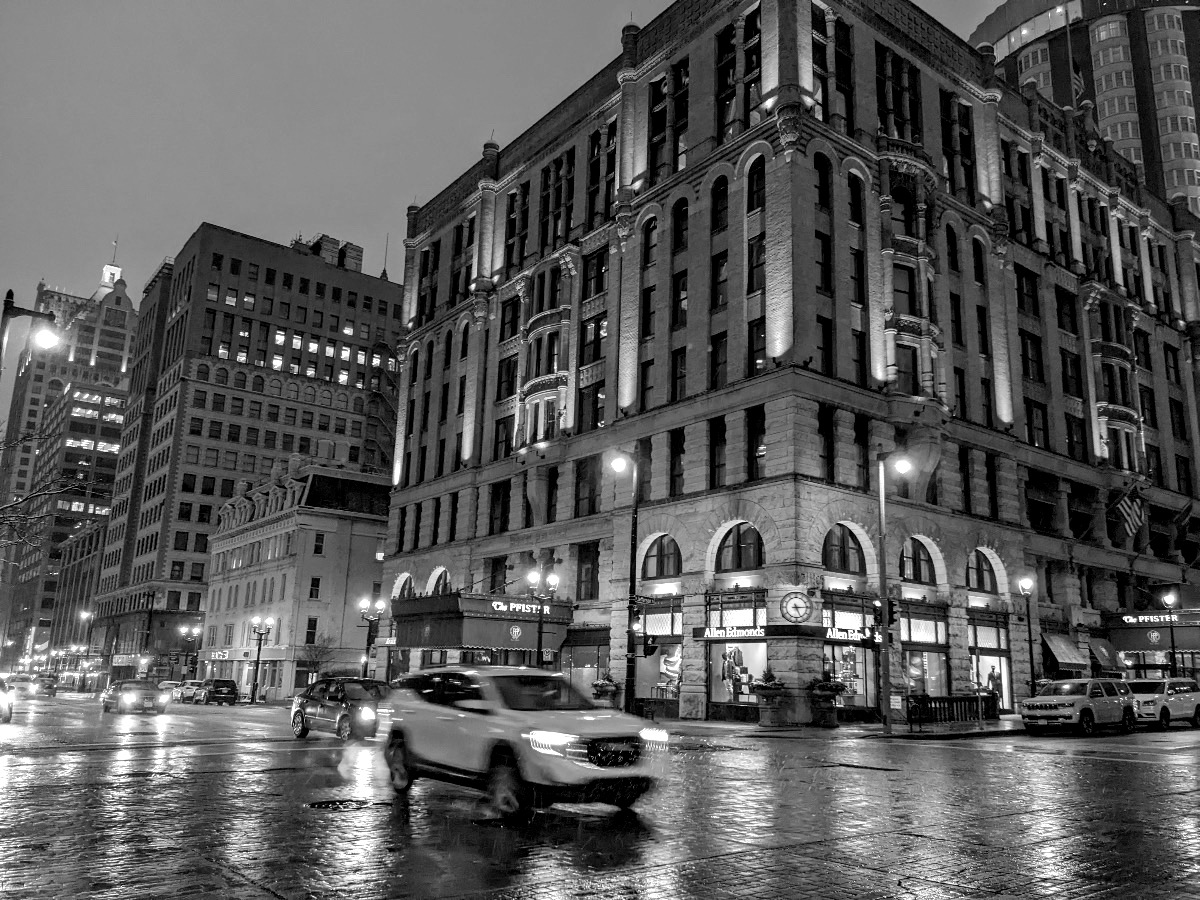Winter brings a number of difficulties for pedestrians. We have discussed snow and ice, which can make sidewalks inconsistent and dangerous.
Another safety challenge is winter’s early darkness. Crashes that lead to pedestrian deaths frequently occur at night. Learn about some of the contributing factors to these crashes and how you can keep yourself and others safe.
Road Design
Many aspects of street design create dangerous conditions for pedestrians year-round. The longer nights and winter weather can add additional risks. Some elements of street design that impact safety include:
- Street lighting
- Like many other cities, Milwaukee is trying to upgrade its street lighting infrastructure. In the current funding environment, this is difficult. Some money has been allocated to make existing street lights more reliable. You can report a downed street light online (using “Street Light Out” or “Alley Light Out” categories), via the app, or by calling (414) 286-CITY (2489).
- Sidewalks
- Milwaukee has an impressive sidewalk network covering most of the city. However, sidewalk quality can be a challenge. Damaged sidewalks and curb cuts can become worse in the winter, in addition to the temporary impact of snow and ice. Report snowy/icy sidewalks. If a sidewalk is damaged or a tree is lifting the sidewalk, you can report those issues using the “Sidewalk Repair” or “Roots Lifting Sidewalk” options online.
- In areas without sidewalks, plan to walk facing traffic and on the left side of the road. (For those who bike, please note that you should bike with traffic.)
- Crossing distance
- When a person has to cross a street at an intersection, they will often have to cross two parking lanes and at least two vehicle travel lanes. This means that pedestrians are in the roadway longer than if there were smaller lanes, fewer lanes, or curb extensions. Every second in the roadway is an additional vulnerability. Depending on the design of the street lighting, lighting may be more or less effective in certain parts of the crosswalk. You can learn more about potential options to make streets safer through programs like the Neighborhood Traffic Management Program and DPW’s Rapid Implementation Improvements.
Drivers
Drivers are responsible for driving carefully during nighttime and winter conditions. Here are some tips:
- Turn on headlights during poor conditions and before dusk
- Headlights help all road users in two ways. They help drivers see the road, objects, and other road users. They also help pedestrians, cyclists, and other drivers see a vehicle approaching. Headlights are useful to “see” and “be seen.”
- Drive the speed limit
- The speed limit is just that: a limit, not a suggestion or a minimum. Driving at or below the speed limit is both the responsible thing to do and is mandated by law. By driving at an appropriate speed, drivers increase the likelihood that they will see a pedestrian before hitting them (thus preventing a crash). Lower speeds also reduce the severity of a crash. Learn more about the impact of speed in our post about Milwaukee’s 2022 pedestrian fatalities.
- Expect pedestrians
- Whether you are driving to work, school, the doctor, or a friend’s house, expect to be sharing the road with other people doing the same. Whether it is early, late, or the middle of the day, there is likely always another road user near you.
Pedestrians
Pedestrians should be aware of their surroundings during dark, cold weather. While the law is often on the side of people walking, some precautions will help to prevent injury.
- Look twice when crossing
- Always look for vehicles when crossing a road. Do not just look for headlights. This is especially true when crossing mid-block. Crossing outside a signalized intersection or a marked/unmarked crosswalk is legal if a pedestrian yields to oncoming vehicles. During dusk or dawn, take extra care to look for vehicles, especially those without headlights on.
- Avoid walking alone while inebriated
- Never drink and drive. If you drink or are otherwise inebriated, walk home with a friend or get a ride from a sober friend, taxi, the bus, or rideshare.
- Be careful when entering your vehicle
- Most of us are pedestrians at some point during our day. Some crashes occur when a person is leaving or entering their vehicle. In these moments, they are a pedestrian: using the road on foot or using a mobility device. For example, if you are parked mid-block, street light may not be as good as it is at a crosswalk. Be aware of vehicles approaching.
